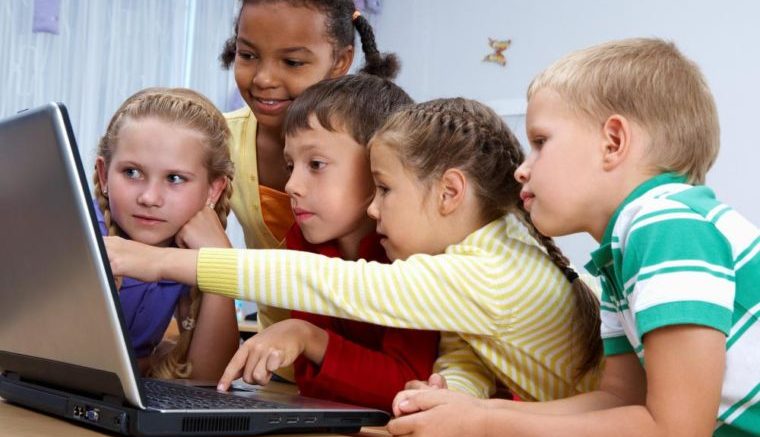By Natalle Hay
Kids removed from the structure of a classroom environment are being asked to do school from home amid all their favorite toys and electronics (and in the very places where they are used to sleeping, watching TV and really doing everything else BUT school). Don’t worry parents! To a young, inquisitive learner there is “distraction” everywhere, and a lack of focus is totally normal.
We put together a short list of things to consider when it comes to helping your child succeed in checking things off of their at-home learning to-do list—while still thriving in and enjoying the learning process!
A Space to Work
While it’s cozy to sit on the couch or in bed while reading a book or sitting in on a Zoom call, it isn’t the best posture for staying alert and engaged. Help your child find a place in the house designated for school Zoom meetings and assignments.
Having a separate space for these activities will help your child meet the different goals and expectations that come with a school environment (like that of staying focused). They will enjoy decorating this space, and you can help them arrange it in a way that works best for them! From selecting seating options to personalizing the space, you’ll love some of the ideas you’ll find here for customizing their area.
Take Breaks
Once your child has a designated space for participating in their school meetings and learning activities, it will benefit them to have time away from this space throughout the day. Whether it’s through posting a schedule, setting goals or using alarms to notify them when it’s time to step away, planning for and remembering to take these breaks will directly help with their focus in school activities.
These breaks don’t have to be long, just regular and routine. Here is a list of 50 “brain break” ideas you are likely to enjoy just as much as your child!
Integrate Play
When designing a daily schedule with “school” in mind, it is easy to overlook play. Assignment lists can pile up and Zoom meetings take time. However, play is a natural and necessary part of a child’s learning both at home and at school. Play is learning! In fact, a lot of what teachers, students and parents are all grieving over in our new-found distance learning situations is the play that naturally occurs for kids in the classroom. Luckily, when it comes to play, it’s more about making space and time (taking things out of the plan) than it is about adding any more structure.
Here is a thoughtful description of “meaningful play” likely to help you design their schedule and learning space in ways that encourage just that—play!
Plan Ahead and Set Goals
In a classroom setting, there is always some kind of agenda or “morning meeting” where children are made aware of what the day has in store. This allows them to set goals, have things to look forward to and, in some ways, feel “in control.” In other words, the day is not an endless void of unknown ahead of them—there is predictability as well as possibility. Helping them to acknowledge both of these things is good for focus!
If you’re able to make time for this each day, you and your child will both benefit. Along with some kind of agenda or checklist, you may want to help them externalize some goals (big or small). In classrooms there are all sorts of ways that students engage with and track these kinds of things, but at home you may want to look into digital goal logging and tracking (especially in a multi-kid home). Here is a list of popular phone apps to help kids set and track their goals with family support!
Help Them Stay Organized
Lastly, nothing can throw off a day (or one’s focus within the day) than starting it off disoriented and looking for a “lost” item. For adults it’s so often something like the car keys or a wallet—that one thing you really need to be able to get to the next step. For kids with distance learning it’s things like the computer charger, any one of the books sent home from school or a sharpened pencil. Having a designated working space will help with this, and having a space to put or keep each item within that space is even better!
Here is a link with some helpful ideas for thinking in more detail about designing a space for your child’s learning at home. It takes into consideration the small details that matter for keeping things together in one place so they’re ready to go each morning.

